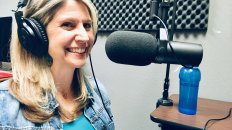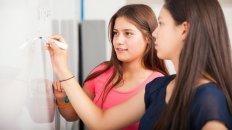In this episode host Jennifer Russell and education specialist, and transition expert, Elizabeth Danner, discuss the importance of transition planning for lifeskills teachers.
Audio Transcript
Download the full audio transcript
Jennifer Russel:
Hey everybody, welcome to LifeSkills Radio. I’m your host, Jennifer Russell, and today I am delighted to have our very own Elizabeth Danner. So we’re gonna talk about transition. Yay.
E. Danner:
Hi Jen, thanks for having me.
Jennifer Russel:
Hey, Elizabeth. Thank you for being here. Tell us a little bit about your experience as a life skills teacher and how you got into transition.
E. Danner:
I came to the classroom after years of doing social work and supported employment, supported living for adults with disabilities. And then, I ended up getting a job as a peer professional in a classroom and that’s kind of what brought back my love for teaching. So that’s how I landed as a high school life skills teacher, supporting students with intellectual disabilities in inclusion, in to the general classes as well as access to the community. So as part of that experience, I just had that feeling that we were doing so much work and as student’s left, graduated and left the protections of IDEA, the Individuals with Disabilities Education Act, as students were leaving public schools it just felt like, without really effective on going transition planning, they were just kind of falling off a cliff.
And even students who had families with a lot of resources, really the key to sustainable adult lives was transition planning. So that’s where I became sort of obsessed with that.
Jennifer Russel:
Tell us what it looks like. You know, when things don’t work out well, and the bus stops coming, what do we typically see for a child who has significant disabilities and exits out of the system?
E. Danner:
Right, so, indicator 14, talk about dry when you say state performance plan indicator 14. It sounds very dry. But really what that data tells us, it’s a federal accountability system. And what it tells us is what happens a year after students exit public schools. Students with disabilities. What are they doing? Are they enrolled in some kind of continued learning, either college or community college or some kind of continued learning – technical school, anything like that. Are they in a job? What’s their career looking like? Or do they have some type of other employment? Or, are they graduating to the couch with none of the above activities? And so, right now, the latest data that came out of the fall 2018 reports is, state wide, it is close, I think it’s above 35 percent of students with disabilities are graduating to the couch. And within region 13, it’s about 24 percent. So even while I celebrate that region 13 districts are performing better, that’s still one quarter of our students are graduating to the couch.
That data is very complex. I could talk about that all day, we don’t have time for that in this podcast, but it does tell us that that’s the kind of worst case scenario. That they haven’t found their way to a career. Now the data reflects not just students with intellectual disabilities, but with all disabilities. So we haven’t disaggregated all of that. But still, I think we all know, anyone who has been in the classroom for a few years, when you hear back from families and when you run into a family at Randall’s or HEB and, “Hey, how are things going?”, and so often, too often, you hear, “Ugh, we’re struggling to find something that works”. Now, it’s also wonderful to hear the success stories. But really, that key to special education is that we can be that link. We can put things in place and make connections that will support the student, lifelong.
Jennifer Russel:
And so let’s talk a little bit more about those links and those connections and think about what teachers need to keep in mind. I know that when I was in the classroom, and I worked primarily with younger students, so before I really understood the continuum or the alignment, I really didn’t think it had that much to do with what I was doing with my little four year olds.
E. Danner:
It felt so far off.
Jennifer Russel:
It felt very far removed. But now I know that independence, that’s what we’re working on, whether the child is four or fourteen or twenty-one.
E. Danner:
Absolutely.
Jennifer Russel:
So, thinking about the skills that will, you know, what is working on independence look like for a four year old?
Download full transcript
Checkout the rest of the lifeskills series
Jennifer Russell is an education specialist for the Early Childhood Special Education team here at the Education Service Center Region 13.









Add comment